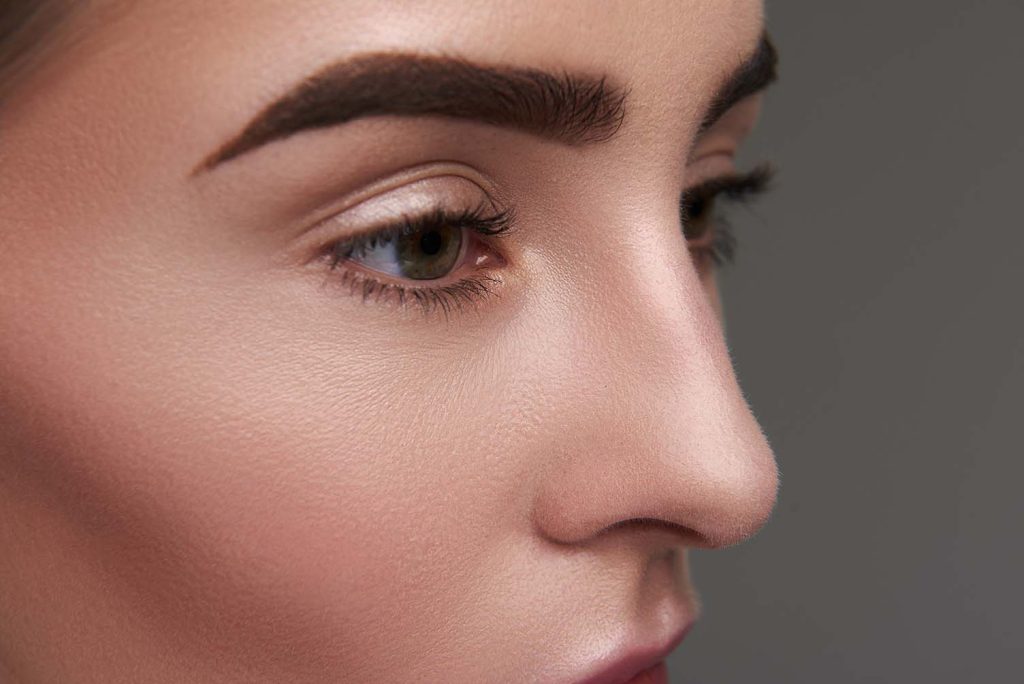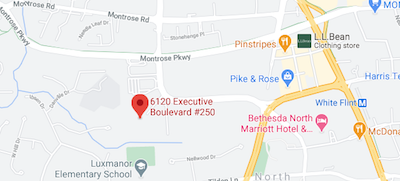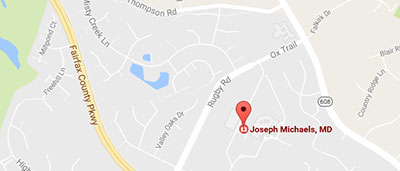Rhinoplasty, also called a “nose job”, is a surgical procedure that alters the shape of the nose for either cosmetic or medical reasons. Many people, including celebrities, undergo rhinoplasty procedures. In fact, we often see their “before” and “after photos in magazines. And, the mark of a good surgeon is that the changes made are a subtle but noticeable improvement to the shape of the nose. Rhinoplasties are performed to help patients to achieve the nose shape they desire, to improve breathing function, or both.
The nose is a surprisingly complex organ, and the only visible portion of the respiratory system. Due to this complexity, and its high visibility, achieving excellent rhinoplasty results can be challenging. Rhinoplasty is, by far, one of the most difficult cosmetic procedures to perform. Therefore, great results require an experienced plastic surgeon. Dr. Joseph Michaels is a board-certified plastic surgeon who has helped many patients experience high-satisfaction with a newly-restructured nose. If you are interested in learning how rhinoplasty can help you achieve the nose you desire, contact Dr. Michaels at our Rockville or Fairfax office today, at (303) 468-5991 (Rockville) or (703) 957-8610 (Fairfax) or fill out an online contact form.
Contents
Before and After Photos
About Rhinoplasty
Rhinoplasty dates back to the 19th century when the first recorded rhinoplasty involved amending the shape of the nose through the nostrils. (1) Today the procedure is one of the most common plastic surgeries in the United States, with more than 352,000 rhinoplasties performed each year.
Contemporary rhinoplasty involves restructuring the nose from the inside of the nasal cavities, or by using an external incision at the base of a patient’s nose. A surgeon can change the shape of the nose in many different ways. The technique used depends on the surgeon’s preferences, and on your anatomy. In some cases, cartilage is used to add shape to the nose. This tissue can be harvested from another area of the body, such as the ear. Similarly, cartilage can also be taken away to streamline a hooked or crooked nose profile. Extensive changes may require the use of cartilage from multiple areas.
Types of Rhinoplasty
Rhinoplasty can be a solution for effectively addressing nasal challenges. Procedures include:
- Nasal Hump Removal
- Bridge Straightening
- Tip Reshaping (Tip Plasty)
- Increasing Nostril Size
- Decreasing Nostril Siz
- Opening Breathing Passages
Patients may also request specific custom rhinoplasty procedures based on their individual needs. These procedures include ethnic rhinoplasty; female rhinoplasty; male rhinoplasty; rhinoplasty for patients that are transitioning genders; and teen rhinoplasty.
Female rhinoplasty ensures a more “feminine” nose shape with subtle upward tilt to the tip of the nose. Female noses also tend to be shorter and smaller than a male’s and should complement the proportions of the face.
Male rhinoplasty ensures a more “masculine” nasal structure. Men tend to have a more prominent nose, with a higher bridge and more width in the mid-nose region. The skin on the nose is also thicker than the skin on a woman’s nose.
Ethnic rhinoplasty enhances the nose structure while maintaining the nasal structure prominent among one’s cultural identity. We specialize in ethnic rhinoplasty for individuals of African American, Hispanic, and Asian descent.
Trans rhinoplasty requires incredible attention to detail because of the major role the nose plays in facial feminization or masculinization. Facial feminization requires creating a soft, refined nasal shape while maintaining facial proportions. Facial masculinization often requires cartilage grafts and adjustments to create a more prominent nasal frame.
Teen rhinoplasty enhances the shape of the nose while maintaining proportions of a younger face. The procedure requires parental consent, and that the patient’s nose is done developing (which occurs around age 15 or 16).
Additionally, our rhinoplasty technique utilizes what is called the preservation rhinoplasty, or structural rhinoplasty approach. This approach allows surgeons to preserve the nose’s structural framework, which reduces complications and improves overall results.
Benefits
Rhinoplasties are highly desirable. People who have had a rhinoplasty are perceived as healthier, more attractive, and more successful. (2) Good surgeons understand the intricacies of the roles that bone, skin, and cartilage play in nasal structure and function. Benefits of rhinoplasty can include:
- Increased confidence and self-esteem
- Smoothing of humps and curves
- Reduced sinus issues (fewer headaches, nasal congestion, and pressure)
- Reconstructed or repaired nose after injury
- Corrective restoration of a previous procedure (revision rhinoplasty)
- A permanent solution to snoring
Candidates for Rhinoplasty in Rockville, MD and Fairfax, VA
You may be a good candidate for rhinoplasty if:
- Your nose is asymmetrical.
- You are unhappy with the size or shape of your nose.
- You have a prominent nasal hump.
- You were born with a nasal defect such as a hump or odd-shaped nasal tip.
- You experience difficulty breathing through your nose.
In addition, our patients are physically healthy, nonsmokers who have realistic goals and expectations.
A rhinoplasty may not be a good fit for patients who have unrealistic expectations, experience body dysmorphic disorder (BDBD), or who have a current or prior history of intranasal drug use.
Personal Consultation
Selecting a rhinoplasty surgeon can be a difficult task because the procedure requires incredible attention to detail and maximum precision. Dr. Michaels is an experienced board-certified plastic surgeon who specializes in cosmetic and reconstructive surgery. He also offers minimally invasive and non-surgical aesthetic solutions. To discuss your aesthetic goals and learn more about how rhinoplasty can help you achieve them, contact us today!
Preparation
To prepare for a rhinoplasty procedure, we recommend that you:
- Get blood work done to ensure normal levels.
- For patients over 50, get an EKG, electrocardiogram to ensure safe heart function.
- Pre-arrange transportation home with a person you trust.
- Avoid alcohol, a blood-thinner that will increase bruising and swelling
- Eat healthily and stay well hydrated. Cease food and drink intake as/when directed.
- If you smoke, stop all use of nicotine products 4 weeks in advance.
- Avoid blood-thinning medications like aspirin and ibuprofen, along with certain vitamins and supplements (Including; St. John’s Wort, ginkgo biloba, ginseng, garlic, and green tea extract).
Procedure
The details of your surgical plan will be determined based on your needs and desires. While rhinoplasties are commonly performed to improve the aesthetics of the nose during cosmetic rhinoplasties, they are also performed to improve breathing function. Septoplasties are performed to correct a deviated septum, the section of cartilage that divides the nose in two and forms the profile of the nose. During this procedure, the septum is reshaped so that it can be straightened and so that airways are unobstructed. Regardless of the concerns being addressed, rhinoplasty is performed with great care in a multi-stage procedure.
Anesthesia
Local anesthesia and intravenous sedation or general anesthesia are administered to ensure the patient’s comfort. Dr. Michaels will make a recommendation based on your treatment plan and custom needs.
Incisions
Your surgeon will perform rhinoplasty using either an open or closed procedure. An open procedure creates an incision across the columella; the tissue that separates the nostrils. A closed procedure creates an incision inside the nose that is hidden from sight. Both the open and closed procedure allow access to the nasal bones and cartilages for reshaping.
Reshaping the Nose
A larger, more prominent nose may require that bone or cartilage is removed. For patients that require additional support or dimension to the underlying nasal structure, a cartilage graft may be necessary. Your surgeon may use cartilage from the septum to alter the shape of the nose. Ear cartilage or cartilage taken from the patient’s ribs is also sometimes used in nose reshaping. Dr. Michaels will place strategic sutures to alter the angling of the internal structures, create the desired shape, and ensure stability.
Closing the Incision
After the underlying nasal structure has been shaped, your surgeon will redrape the soft tissues of the nasal skin, if an open rhinoplasty has been performed, and close the incisions.
Prepare for Recovery
To aid the healing process, splints and gauze will be placed to protect and support the nose as it heals. It is vital you follow the aftercare advice given by Dr. Michaels to ensure the best possible aesthetic outcomes.
Recovery
After your procedure, Dr. Michaels will provide information on post-operative care, including your medication schedules. Follow these instructions carefully for the most comfortable post-operative experience.
- Rest with your head in an elevated position for up to two weeks post-surgery to help reduce swelling.
- Avoid bending over, excessive straining, and lifting heavy items for two weeks after surgery.
- Avoid activities that could increase the risk of you bumping your nose. Take particular care around children and pets.
- Use pain medication exactly as prescribed.
Results
Rhinoplasty can make a significant difference in the appearance of your nose and thus overall face. Within a few weeks of your surgery, swelling will reduce dramatically. In the months ahead, you should expect to see a gradual change in the appearance of your nose. Most patients see their finished results within a year of their surgery. Visible improvements will occur gradually as you heal.
Cost of Rhinoplasty
Your insurance provider may cover some costs if it is deemed medically necessary. The cost will depend on your treatment plan, the type of anesthesia administered; and the complexity of the procedure. Set up a personal consultation today with Dr. Michaels at our Rockville or Fairfax location, by calling (303) 468-5991 (Rockville) or (703) 957-8610 (Fairfax).
References
- Tasman, A.J. Rhinoplasty – indications and techniques. (2007). GMS Current Topics in Otorhinolaryngology–Head and Neck Surgery, 6(Doc09): Epub 2008, https://www.ncbi.nlm.nih.gov/pmc/articles/PMC3199847/
- Nellis, J.C., Ishii, M., Bater, K.L., Papel, I.D., Kontis, T.C., Byrne, P.J., Boahene, K.D.O., & Ishii, L.E. Association of Rhinoplasty With Perceived Attractiveness, Success, and Overall Health. (2018). JAMA Facial Plastic Surgery. (2018). 20(2): 97-102. https://www.ncbi.nlm.nih.gov/pmc/articles/PMC5885959/#:~:text=The%20results%20showed%20that%20patients,as%20rated%20by%20casual%20observers













